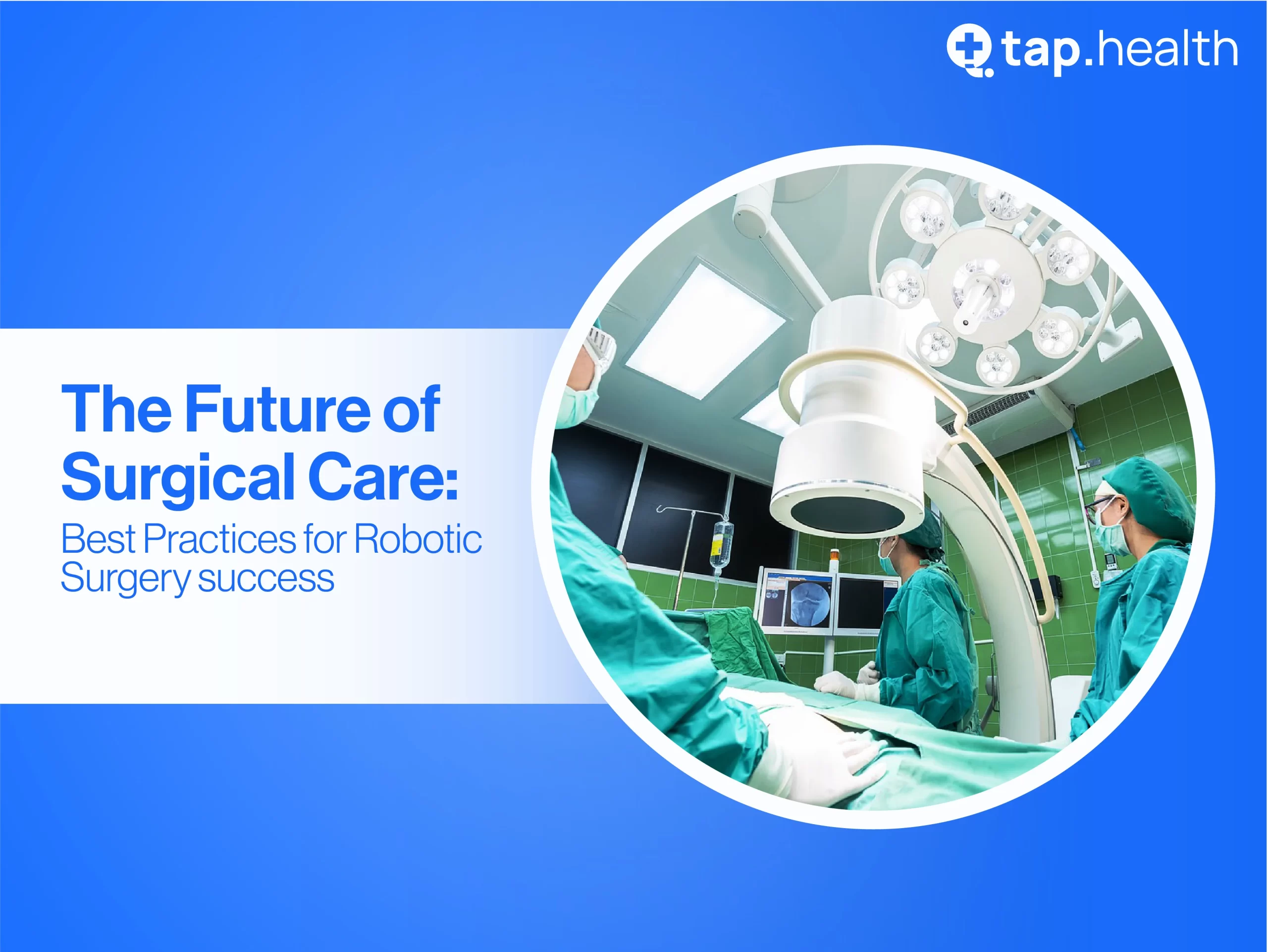Robotic surgery has transformed modern medicine, offering precision, minimally invasive techniques, and improved patient outcomes. Understanding the factors that drive high robotic surgery success rates is critical for surgeons, healthcare facilities, and patients. This blog explores the best practices, challenges, and advancements contributing to successful robotic surgeries, addressing common questions such as What makes robotic surgery successful? and How does it compare to traditional surgery?
What Is Robotic Surgery and How Does It Work?
Understanding Robotic Surgery Robotic surgery involves advanced robotic systems, such as mechanical arms equipped with surgical instruments and high-definition cameras, controlled by a surgeon from a console. These systems provide magnified views of the surgical site, enabling precise movements and enhanced visibility. This minimally invasive approach reduces patient trauma, shortens recovery times, and improves surgical outcomes compared to traditional methods.
Key Benefits of Robotic Surgery
- Precision: Robotic arms mimic a surgeon’s hand movements with enhanced dexterity and stability.
- Minimally Invasive: Smaller incisions lead to less pain, reduced scarring, and faster recovery.
- Enhanced Visualization: High-definition, 3D imaging improves accuracy during complex procedures.
How Has Robotic Surgery Evolved?
Advancements in Robotic Surgery Robotic surgery has seen significant advancements, driven by innovations in technology and surgical techniques. Modern robotic systems offer improved ergonomics, greater dexterity, and enhanced visualization, contributing to higher success rates. Emerging technologies, such as artificial intelligence (AI) and machine learning, are being integrated to further improve decision-making and precision. These advancements are making robotic surgery safer and more effective, with applications across specialties like urology, gynecology, and orthopedics.
Future of Robotic Surgery The integration of AI and real-time data analytics promises to enhance surgical planning and execution, potentially reducing complications and improving outcomes. As technology evolves, robotic surgery is expected to become even more accessible and efficient.
Robotic Surgery vs. Traditional Surgery: Success Rate Comparison
Comparing Outcomes Robotic surgery often outperforms traditional open surgery in terms of success rates. Studies show patients experience:
- Fewer complications (e.g., infections or excessive bleeding).
- Reduced blood loss during procedures.
- Shorter hospital stays and faster recovery times.
- Improved long-term outcomes, such as lower recurrence rates for certain conditions.
Factors Driving Success Several factors contribute to robotic surgery’s high success rates:
- Surgeon Expertise: Skilled surgeons trained in robotic techniques achieve better outcomes.
- Advanced Technology: Robotic systems offer unmatched precision and control.
- Minimally Invasive Approach: Smaller incisions reduce tissue trauma and recovery time.
- Patient Factors: Pre-operative health and adherence to post-operative care significantly impact success.
What Determines Robotic Surgery Success?
Key Metrics for Success The success of robotic surgery is measured by:
- Surgical Accuracy: Precision in achieving surgical goals with minimal errors.
- Patient Satisfaction: Reduced pain, faster recovery, and improved quality of life.
- Long-Term Outcomes: Durable results with minimal complications over time.
Role of Technology Robotic systems provide enhanced dexterity, allowing surgeons to perform complex procedures with greater control. Intuitive interfaces and high-definition imaging enable precise navigation of the surgical site, reducing the risk of errors.
Statistical Insights Data analysis plays a vital role in evaluating robotic surgery outcomes. By studying success rates across procedures and patient populations, researchers identify trends and areas for improvement. For example, statistical analysis can highlight which techniques or systems yield the best results, guiding future advancements.
The Role of Surgeons in Robotic Surgery Success
Surgeon Skills and Expertise A surgeon’s proficiency in robotic surgery is a critical determinant of success. Specialized training in robotic systems, including hands-on practice with simulators and observation of experienced surgeons, is essential. Surgeons must develop:
- Technical Proficiency: Mastery of robotic instruments and console operation.
- Hand-Eye Coordination: Ability to navigate the surgical site using visual cues.
- Adaptability: Handling the unique challenges of robotic-assisted procedures.
Training and Preparation Comprehensive training programs ensure surgeons stay updated on the latest robotic surgery techniques. Continuous education, including workshops and certifications, enhances their ability to deliver optimal outcomes. Effective teamwork and communication with the surgical team also contribute to a seamless and successful procedure.
What Are the Risks and Challenges of Robotic Surgery?
Potential Complications Despite its high success rates, robotic surgery carries risks, including:
- Infections: Though less common than in traditional surgery, infections remain a concern.
- Technical Malfunctions: Software glitches or mechanical failures can disrupt procedures.
- Anesthesia Risks: Adverse reactions may occur, as with any surgery.
- Tissue Damage: Precision is critical to avoid unintended harm to surrounding tissues.
Overcoming Challenges Robotic surgery presents unique challenges, such as:
- Learning Curve: Surgeons require extensive training to master robotic systems.
- Lack of Tactile Feedback: Surgeons rely on visual cues, requiring advanced spatial awareness.
- High Costs: Acquiring and maintaining robotic systems is expensive, limiting accessibility.
To address these challenges, healthcare facilities invest in robust training programs and maintenance protocols. As surgeons gain experience and technology improves, these challenges are gradually mitigated, leading to higher success rates.
Best Practices for High Robotic Surgery Success Rates
1. Invest in Surgeon Training Ensure surgeons undergo rigorous training, including simulator practice and mentorship from experienced robotic surgeons. Continuous education keeps them updated on technological advancements.
2. Leverage Advanced Technology Utilize the latest robotic systems with enhanced imaging and AI integration to improve precision and decision-making. Regular system maintenance minimizes the risk of technical issues.
3. Optimize Patient Preparation Conduct thorough pre-operative assessments to ensure patients are suitable candidates for robotic surgery. Clear post-operative care instructions enhance recovery and outcomes.
4. Foster Team Collaboration Encourage seamless communication and coordination among the surgical team, including nurses, anesthesiologists, and technicians, to ensure a smooth procedure.
5. Analyze and Learn from Data Use statistical analysis to evaluate outcomes and identify areas for improvement. Data-driven insights help refine techniques and protocols for better results.
How Can Patients Benefit from Robotic Surgery?
Patients undergoing robotic surgery experience:
- Faster Recovery: Smaller incisions lead to quicker healing and shorter hospital stays.
- Reduced Pain: Minimally invasive techniques cause less post-operative discomfort.
- Lower Complication Rates: Precision reduces the risk of infections and other issues.
- Improved Quality of Life: Better outcomes enhance long-term health and well-being.
By choosing experienced surgeons and advanced facilities, patients can maximize these benefits and achieve optimal results.
The Future of Robotic Surgery
The future of robotic surgery is bright, with ongoing advancements poised to further improve success rates. Innovations like AI-driven analytics, robotic automation, and enhanced imaging systems will make procedures even safer and more precise. As costs decrease and accessibility improves, robotic surgery will become a standard option for a wider range of procedures, benefiting patients worldwide.
Conclusion
Robotic surgery has redefined surgical precision and patient care, offering higher success rates than traditional methods. By focusing on surgeon training, leveraging advanced technology, optimizing patient care, and addressing challenges, healthcare providers can maximize outcomes. As technology continues to evolve, robotic surgery will play an increasingly vital role in advancing modern medicine, delivering better results and improving patients’ lives.



